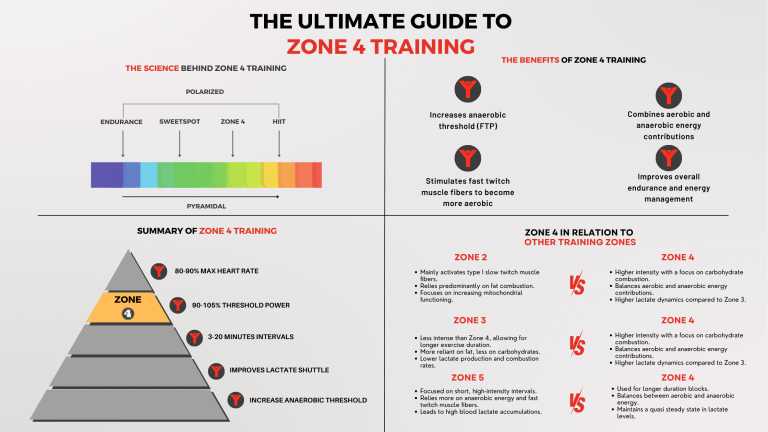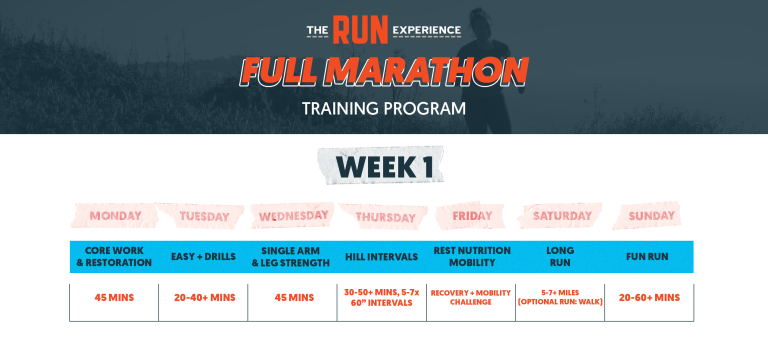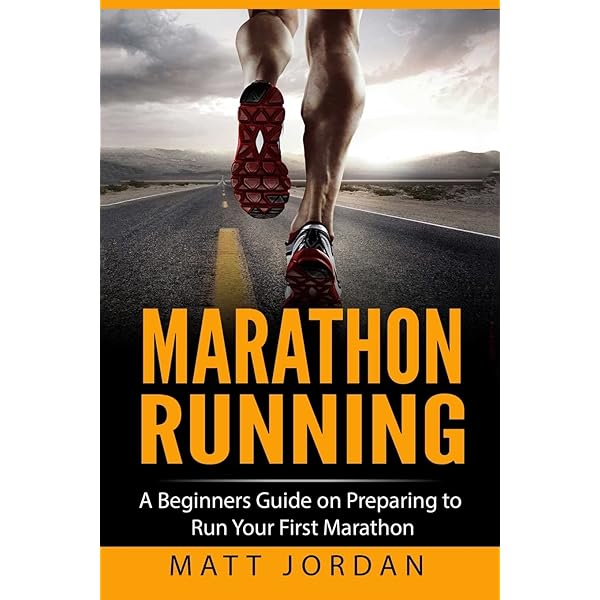Marathon Running Checklists You Need to Care
Running a marathon is not just a test of physical endurance but also a demonstration of meticulous planning and preparation. From the moment you decide to embark on this 26.2-mile journey, having a structured approach can make all the difference. Checklists are an invaluable tool for marathon runners, ensuring nothing is overlooked and every detail is accounted for. In this blog, we’ll explore comprehensive checklist ideas that cover every phase of marathon running – from pre-race preparations and training routines to race day essentials and post-race recovery. Whether you’re a seasoned marathoner or preparing for your first race, these checklists will help you stay organized, focused, and ready to conquer the course.
Pre-Race Preparation Checklist for Marathon Running
Preparing for a marathon requires meticulous planning and dedication. Here’s a comprehensive checklist to ensure you are fully prepared for race day:
1. Training Plan
- Structured Plan: Follow a well-structured marathon training plan that includes a mix of long runs, speed work, and rest days. This helps build endurance, speed, and recovery.
- Consistency: Stick to the plan consistently. Consistent training is key to building the stamina required for a marathon.
2. Running Gear
- Running Shoes: Invest in a good pair of running shoes suited for long-distance running. Get them fitted at a specialized running store to ensure they provide proper support and comfort.
- Running Clothes: Choose moisture-wicking, breathable fabrics for your running clothes to keep you comfortable and dry. Consider weather-appropriate attire for varying conditions.
- Socks: Wear moisture-wicking socks to prevent blisters. Consider compression socks for additional support.
3. Nutrition Plan
- Balanced Diet: Follow a balanced diet rich in carbohydrates, proteins, and healthy fats to fuel your body during training. Focus on whole foods and avoid processed foods.
- Carb-Loading: Practice carb-loading before your long training runs and races to maximize your glycogen stores. Aim to consume complex carbohydrates like pasta, rice, and potatoes.
4. Hydration Strategy
- Daily Hydration: Maintain good hydration habits daily. Drink plenty of water and include electrolyte drinks to balance sodium levels.
- Training Hydration: Develop a hydration plan for your long runs and practice it during training. Test different electrolyte drinks and gels to find what works best for you.
5. Mental Preparation
- Goal Setting: Set realistic and achievable goals for your marathon. This could be finishing the race, hitting a personal best, or simply enjoying the experience.
- Visualization: Practice visualization techniques. Imagine yourself successfully completing the marathon, which can boost your confidence and motivation.
- Positive Self-Talk: Develop a habit of positive self-talk to maintain a positive mindset during training and on race day.
6. Medical Check-Up
- Health Assessment: Schedule a medical check-up before starting your training. Ensure you’re in good health and address any existing injuries or health concerns.
- Injury Prevention: Work with a physiotherapist to develop a plan for injury prevention and management.
7. Cross-Training
- Alternative Activities: Incorporate cross-training activities like cycling, swimming, or yoga into your routine. These activities help improve overall fitness and prevent burnout.
- Strength Training: Include strength training exercises focusing on core, legs, and upper body to enhance running performance and reduce the risk of injuries.
8. Route Planning
- Familiarization: Familiarize yourself with the marathon route. Know the course layout, including elevation changes and aid station locations.
- Training Routes: Plan your training routes to mimic the marathon conditions as closely as possible. Include similar terrains and elevation profiles.
9. Sleep Schedule
- Consistency: Prioritize getting 7-9 hours of sleep each night. Establish a consistent sleep routine to ensure adequate rest and recovery.
- Quality Sleep: Create a sleep-friendly environment. Keep your room cool, dark, and quiet, and avoid screens before bedtime.
10. Race Registration
- Early Registration: Register for the marathon early to secure your spot. This also helps in planning your training and logistics.
- Confirmation: Confirm your registration details and ensure all information is correct. Keep a copy of your registration confirmation.
By following this pre-race preparation checklist, you’ll be well-equipped to tackle your marathon with confidence and ease. Remember, preparation is key to a successful and enjoyable marathon experience.
Marathon Running Training Checklist
Training for a marathon is a significant commitment that requires dedication, consistency, and strategic planning. Here’s a detailed training checklist to ensure you’re on the right track:
1. Warm-Up Routine
- Dynamic Warm-Up: Incorporate a dynamic warm-up routine before each run. Include exercises like leg swings, lunges, high knees, and arm circles to get your muscles ready and prevent injuries.
- Gradual Start: Begin your runs with a few minutes of walking or easy jogging to gradually increase your heart rate and blood flow to the muscles.
2. Cool-Down Routine
- Post-Run Cool-Down: Always cool down after your run with a light jog or walk for 5-10 minutes to bring your heart rate down gradually.
- Stretching: Include static stretching and foam rolling post-run to improve flexibility and aid in muscle recovery. Focus on major muscle groups like hamstrings, calves, quads, and hip flexors.
3. Mileage Tracking
- Weekly Mileage: Track your weekly mileage to ensure you’re building up your distance gradually and safely. Avoid increasing your mileage by more than 10% per week to prevent overuse injuries.
- Long Runs: Schedule long runs once a week, gradually increasing the distance to build endurance. Aim to complete at least one 18-20 mile run before race day.
4. Pacing Strategy
- Pace Practice: Practice running at your target marathon pace during your training runs. Use a GPS watch or running app to monitor your pace and adjust as needed.
- Interval Training: Incorporate interval training sessions to improve speed and cardiovascular fitness. Alternate between periods of high-intensity running and recovery.
5. Nutrition During Training
- Pre-Run Meals: Experiment with different pre-run meals to find what works best for you. Aim for a mix of carbohydrates and protein 2-3 hours before your run.
- On-the-Run Nutrition: Practice using energy gels, chews, or sports drinks during your long runs. Train your stomach to handle the nutrition you’ll use on race day.
6. Rest and Recovery
- Rest Days: Schedule regular rest days to allow your body to recover and adapt to the training load. Listen to your body and take additional rest days if needed.
- Active Recovery: Incorporate low-intensity activities like walking, cycling, or swimming on rest days to promote blood flow and recovery.
7. Weather Adaptation
- Training in Various Conditions: Train in different weather conditions to prepare for race day. Learn how to dress for hot, cold, and rainy weather and adjust your hydration and nutrition strategies accordingly.
- Heat Acclimatization: If your marathon is in a hot climate, gradually acclimate to the heat by training during the warmer parts of the day.
8. Running Form
- Form Drills: Include running form drills in your routine to improve efficiency and reduce injury risk. Focus on posture, stride, and arm movement.
- Coach or Analysis Tool: Consider working with a running coach or using a running form analysis tool to identify and correct any inefficiencies in your form.
9. Mental Training
- Visualization: Practice visualization techniques by imagining yourself successfully completing the marathon. Visualize different parts of the race, including challenging segments.
- Mental Strategies: Develop mental strategies for staying motivated during tough runs. Use positive affirmations, mantras, and goal-setting to maintain focus and determination.
10. Injury Prevention
- Strength and Conditioning: Incorporate strength and conditioning exercises focusing on core stability, leg strength, and balance to support your running and prevent injuries.
- Regular Assessments: Schedule regular assessments with a physiotherapist or sports massage therapist to address any niggles or minor injuries before they become major issues.
11. Cross-Training
- Alternative Activities: Include cross-training activities like cycling, swimming, or yoga to improve overall fitness and prevent burnout. These activities provide a break from running while still maintaining fitness.
- Strength Training: Integrate strength training exercises targeting major muscle groups, especially the core and lower body. This helps improve running efficiency and reduce the risk of injury.
12. Race Simulation
- Dress Rehearsal: Plan a few dress rehearsal runs where you simulate race day conditions. Wear the gear you plan to use, practice your nutrition and hydration strategy, and run at your target pace.
- Tapering: Implement a tapering period in the final weeks before the marathon. Gradually reduce your mileage while maintaining intensity to allow your body to rest and recover before race day.
By following this comprehensive training checklist, you’ll be well-prepared physically and mentally to tackle your marathon. Consistent training, proper nutrition, and strategic planning will help you achieve your race day goals.
Race Day Checklist for Marathon Running
Race day is the culmination of months of hard work, dedication, and preparation. To ensure everything goes smoothly and you can focus on running your best race, here’s an extensive checklist to guide you through the day:
1. Race Kit Preparation
- Clothing: Lay out your race outfit the night before. Include moisture-wicking clothes, a comfortable running shirt, shorts or tights, and weather-appropriate layers.
- Shoes: Wear the shoes you’ve trained in and are comfortable with. Avoid new shoes to prevent blisters and discomfort.
- Socks: Choose moisture-wicking socks that prevent blisters. Consider using compression socks if they work for you.
- Accessories: Prepare accessories like a hat or visor for sun protection, sunglasses, and a wristband or headband to manage sweat.
- Race Bib: Attach your race bib to your shirt the night before using safety pins or a race belt. Ensure it’s securely fastened and visible.
- Timing Chip: Ensure your timing chip is attached to your shoe or bib as required by the race organizers.
2. Pre-Race Nutrition
- Evening Before: Eat a balanced meal rich in carbohydrates, moderate in protein, and low in fat the evening before the race. Avoid trying new foods.
- Morning Of: Consume a light, familiar breakfast 2-3 hours before the race. Opt for easily digestible foods like oatmeal, a banana, toast with peanut butter, or an energy bar.
- Hydration: Drink water or an electrolyte beverage in the morning, but don’t overhydrate. Sip gradually to avoid feeling bloated.
3. Race Day Hydration and Nutrition
- Hydration: Follow your hydration plan. Start with a bottle of water or an electrolyte drink. Drink small amounts regularly rather than large gulps.
- Energy Gels/Chews: Pack energy gels, chews, or sports drinks if you plan to use them during the race. Ensure they’re easily accessible and consume them at intervals practiced during training.
4. Arrival Time
- Early Arrival: Arrive at the race venue at least 1-2 hours before the start time to allow for parking, bib pickup (if not done prior), bathroom breaks, and warm-up.
- Logistics: Familiarize yourself with the start and finish lines, bag drop-off areas, and restrooms. Know where you need to be and when.
5. Warm-Up Routine
- Dynamic Warm-Up: Perform a dynamic warm-up routine about 30 minutes before the race. Include exercises like leg swings, lunges, high knees, and arm circles to get your muscles ready.
- Light Jogging: Incorporate 5-10 minutes of light jogging or brisk walking to elevate your heart rate and prepare your body for the race effort.
6. Pacing Plan
- Target Pace: Have a clear pacing strategy based on your training. Plan to start at a conservative pace to avoid burnout and gradually build up.
- Mile Splits: Know your target mile splits and use a GPS watch or pace band to stay on track. Adjust your pace based on how you feel and race conditions.
7. Mental Strategies
- Positive Mindset: Stay positive and focused. Use positive affirmations and mantras to keep your spirits high.
- Segmenting: Break the race into smaller, manageable segments. Focus on reaching each milestone rather than the entire distance.
- Visualization: Visualize yourself successfully completing the race. Picture key moments, such as crossing the finish line with a sense of accomplishment.
8. Race Execution
- Start Line: Position yourself appropriately in the starting corral based on your estimated finish time. Avoid starting too fast due to adrenaline.
- Aid Stations: Familiarize yourself with the location of aid stations along the route. Use them to hydrate and refuel as planned.
- Monitor Form: Check in with your running form periodically. Keep a relaxed posture, maintain an efficient stride, and avoid unnecessary tension.
9. Post-Race Recovery
- Cool Down: After crossing the finish line, keep moving to gradually bring your heart rate down. Walk for 5-10 minutes and perform light stretching.
- Hydration: Rehydrate immediately after the race with water or an electrolyte drink. Continue sipping fluids throughout the day.
- Nutrition: Eat a balanced post-race meal within 30 minutes to 1 hour of finishing. Include carbohydrates to replenish glycogen stores and protein for muscle repair.
- Foam Rolling: Use a foam roller or receive a light massage to help alleviate muscle tightness and promote recovery.
10. Reflect and Celebrate
- Reflect on Performance: Take time to reflect on your race performance. Note what went well and areas for improvement.
- Celebrate Achievements: Celebrate your accomplishment, regardless of the outcome. Completing a marathon is a significant achievement, and you deserve to acknowledge your hard work and dedication.
- Thank Supporters: Express gratitude to friends, family, and volunteers who supported you throughout your training and on race day.
By following this extensive race day checklist, you can ensure a smooth, enjoyable, and successful marathon experience. Preparation, planning, and a positive mindset will help you achieve your race day goals.
Post-Race Checklist for Marathon Running
Completing a marathon is a monumental achievement that requires both physical and mental endurance. Once you cross the finish line, your immediate focus should shift to recovery and self-care. Here’s an extensive post-race checklist to help you recover effectively and maximize the benefits of your marathon experience:
1. Immediate Post-Race Actions
- Keep Moving: After crossing the finish line, continue walking for 5-10 minutes to help your heart rate gradually return to normal and to prevent blood from pooling in your legs.
- Cool Down: Engage in light stretching to alleviate muscle tightness. Focus on major muscle groups such as your calves, hamstrings, quads, and hip flexors.
- Hydrate: Drink water or an electrolyte beverage to rehydrate and replenish lost fluids. Avoid sugary or caffeinated drinks immediately after the race.
2. Nutritional Recovery
- Immediate Nutrition: Within 30 minutes of finishing the race, consume a snack or meal that includes carbohydrates and protein to start the muscle repair process. Examples include a banana with peanut butter, a protein shake, or a sports bar.
- Balanced Meal: Eat a balanced meal within 2 hours of finishing the race. Include lean proteins, whole grains, and plenty of vegetables to support overall recovery.
- Hydration: Continue to drink water throughout the day. Aim to drink at least 16-24 ounces of fluid for every pound of body weight lost during the race.
3. Physical Recovery
- Rest and Relaxation: Allow your body to rest. Avoid intense physical activity for at least a few days to give your muscles time to recover.
- Foam Rolling and Massage: Use a foam roller to gently massage sore muscles and improve blood circulation. Consider getting a professional massage a day or two after the race to alleviate muscle tension.
- Ice Baths: Consider taking an ice bath or applying ice packs to particularly sore areas to reduce inflammation and speed up recovery.
- Compression Gear: Wear compression socks or sleeves to improve circulation and reduce muscle soreness.
4. Monitoring and Managing Injuries
- Assess Injuries: Pay attention to any areas of pain or discomfort. Minor aches are normal, but persistent or severe pain may indicate an injury that requires medical attention.
- Consult Professionals: If you experience significant pain or suspect an injury, consult a healthcare professional, such as a physical therapist or sports doctor, for a thorough assessment and appropriate treatment.
5. Sleep and Rest
- Quality Sleep: Prioritize getting plenty of rest and quality sleep in the days following the marathon. Sleep is crucial for muscle repair and overall recovery.
- Napping: Consider taking short naps during the day if you feel fatigued. Listen to your body’s signals and rest as needed.
6. Emotional and Mental Recovery
- Reflect on the Experience: Take time to reflect on your marathon experience. Write down your thoughts and feelings about the race, including what went well and any challenges you faced.
- Celebrate Achievements: Celebrate your accomplishment. Whether it’s sharing your success with friends and family or treating yourself to something special, acknowledge the hard work and dedication that led to this achievement.
- Plan for the Future: Consider setting new goals or planning your next race. Having future aspirations can help maintain motivation and keep you engaged in running.
7. Recovery Workouts
- Active Recovery: Begin incorporating low-impact activities like walking, swimming, or cycling a few days after the race to keep your body moving without adding stress.
- Light Running: Gradually reintroduce light running into your routine after about a week, depending on how your body feels. Start with short, easy runs and slowly increase the intensity and duration.
8. Reintegrating Training
- Ease Back In: Gradually ease back into your regular training routine. Avoid jumping into intense workouts too soon to prevent overtraining and injuries.
- Listen to Your Body: Pay attention to how your body responds to training. If you experience any lingering soreness or fatigue, take additional rest days as needed.
9. Documentation and Analysis
- Race Recap: Document your race experience in detail. Include your race day routine, pacing strategy, nutrition, and any lessons learned. This information can be valuable for future training and races.
- Analyze Performance: Review your race performance data, such as split times and heart rate. Identify areas for improvement and adjust your training plan accordingly.
10. Community Engagement
- Share Your Experience: Share your marathon experience with your running community, either online or in person. Your insights and stories can inspire and motivate others.
- Thank Supporters: Express gratitude to everyone who supported you throughout your training and on race day. Acknowledging their encouragement can strengthen your support network.
By following this extensive post-race checklist, you’ll ensure a thorough and effective recovery process. Taking care of your physical and mental well-being after a marathon is essential for maintaining long-term health and preparing for future running endeavors.
Conclusion
Successfully running a marathon requires more than just physical stamina and mental fortitude; it demands careful planning and thorough preparation. By incorporating detailed checklists into your marathon journey, you can streamline your training, optimize your race day experience, and ensure a smooth recovery. These checklists serve as a roadmap, guiding you through each stage and helping you stay on track. Remember, every small detail matters – from the type of socks you wear to your post-race nutrition. Embrace these checklist ideas to enhance your marathon running experience, achieve your goals, and cross that finish line with confidence and pride. Happy running!




